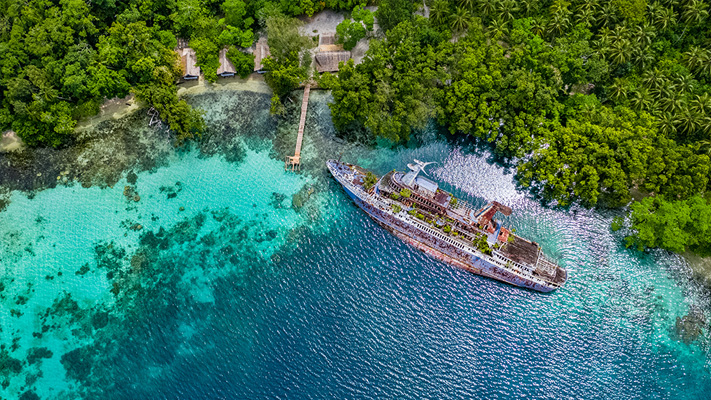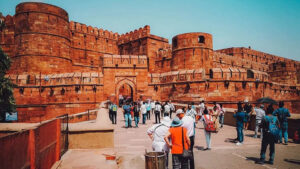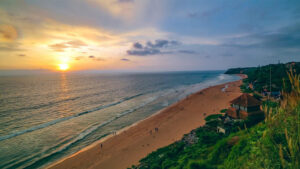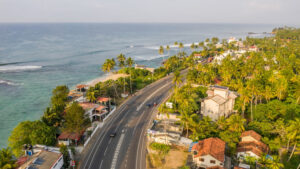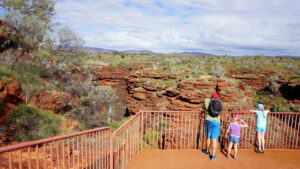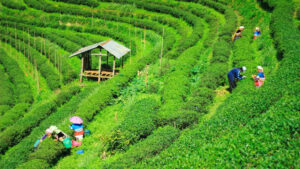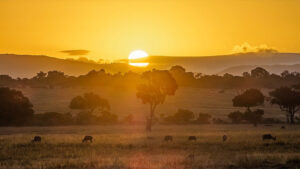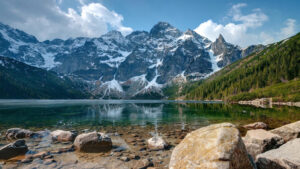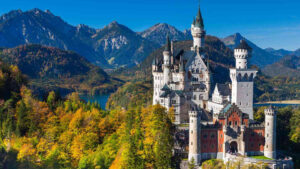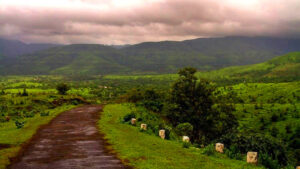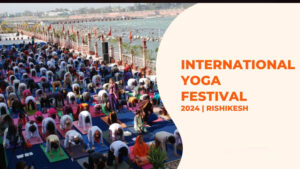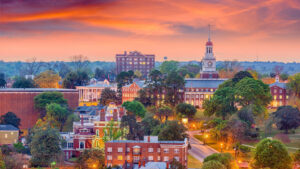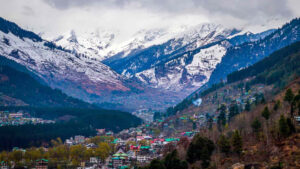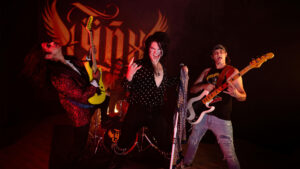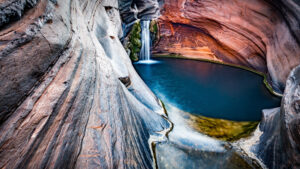SOLOMON ISLANDS – DIVE INTO A WORLD OF CORAL REEFS

The Solomon Islands is a country in the South Pacific Ocean, located east of Papua New Guinea and north of Vanuatu. The country comprises a double chain of islands and coral atolls, with a total land area of around 28,400 square kilometers. The capital and largest city is Honiara, located on the island of Guadalcanal.

The Solomon Islands is a relatively undiscovered tourist destination, offering a unique and authentic experience for travelers seeking adventure, culture, and natural beauty.
The country’s pristine beaches, crystal clear waters, and diverse coral reefs make it a popular destination for snorkeling, scuba diving, and other water activities. The country is also home to many World War II relics and historical sites, such as the Guadalcanal American Memorial and the Vilu War Museum, which are popular among history buffs.
The Solomon Islands is also known for its rich cultural heritage, with many traditional villages and cultural experiences available for visitors. The country’s traditional music, dance, and art are also a highlight for many visitors.
However, the Solomon Islands is still developing its tourism industry, and visitors should be prepared for limited infrastructure and services in some areas. It’s also important to respect local customs and traditions, including dress codes and restrictions on photography in certain areas.
Interesting Facts

- The Solomon Islands is made up of more than 900 islands.
- The country’s official language is English, but there are also more than 70 indigenous languages spoken.
- The Solomon Islands is home to the world’s largest saltwater lagoon, Marovo Lagoon.
- The country is known for its traditional shell money, which was used as currency before the introduction of Western money.
- The Solomon Islands was the site of some of the most intense fighting in the Pacific theater during World War II, and relics of the war can still be found throughout the country.
- The Solomon Islands is home to many unique plant and animal species, including the Solomon Islands monkey-faced bat and the Guadalcanal greentail.
- The country is known for its traditional “kustom” culture, which includes traditional music, dance, and art.
- The Solomon Islands is one of the few places in the world where visitors can witness the phenomenon of bioluminescence, which occurs when tiny organisms in the water emit light.
- The country is also home to one of the world’s largest unexploded ordnance sites, which poses a risk to local communities.
- Rugby is the most popular sport in the Solomon Islands, and the national team is known as the Solomon Warriors.
Popular Tourist Activities
The Solomon Islands offers a range of activities for tourists. Here are some popular tourist activities to consider:

- Snorkeling and Scuba Diving: The Solomon Islands are renowned for their crystal-clear waters and diverse marine life. Popular dive sites include the WWII wrecks around Honiara and the Marovo Lagoon, which is home to numerous coral reefs and a variety of fish species.
- Beaches: The Solomon Islands has numerous unspoiled beaches, with white sand and turquoise waters. Popular beaches include Tavanipupu Beach on Marau Sound and Mbonege Beach on Guadalcanal.
- World War II History: The Solomon Islands played a significant role in World War II, and there are many sites throughout the country that are of historical significance. Popular sites include the Japanese Peace Park and the American War Memorial on Guadalcanal.
- Cultural Tours: The Solomon Islands has a rich cultural heritage, and many visitors enjoy learning about traditional customs and ways of life. Cultural tours may include visits to traditional villages, cultural festivals, and traditional dance performances.
- Hiking: The Solomon Islands offers numerous hiking opportunities, with trails leading through rainforests and past waterfalls. Popular hikes include the Mataniko Falls hike on Guadalcanal and the Kolombangara Island hike.
- Wildlife Watching: The Solomon Islands is home to a variety of unique and endemic wildlife, including the Guadalcanal skink and the San Cristobal Island ground boa. Visitors can also see a variety of bird species, including the Solomon Islands sea eagle and the Nicobar pigeon.
- Surfing: The Solomon Islands has numerous surfing spots, with waves that cater to all levels of surfers. Popular surf spots include Paelongge on Guadalcanal and Titiana on Santa Isabel Island.
Top Attractions and Must See Places
The Solomon Islands offer a range of natural and cultural attractions for visitors. Here are some top attractions and must-see places to consider:

- Marovo Lagoon: This is the world’s largest saltwater lagoon, located on the island of New Georgia. Visitors can take a boat tour of the lagoon, which is surrounded by lush rainforest and home to numerous coral reefs.
- Tenaru Falls: Located on Guadalcanal, the Tenaru Falls are a stunning natural attraction that can be reached via a scenic hike through the rainforest.
- World War II Sites: The Solomon Islands played a significant role in World War II, and there are many sites throughout the country that are of historical significance. Popular sites include the Japanese Peace Park, the American War Memorial, and the Vilu War Museum on Guadalcanal.
- Cultural Villages: The Solomon Islands has a rich cultural heritage, and visitors can experience traditional customs and ways of life by visiting cultural villages. Popular cultural villages include the Langa Langa Lagoon village on Malaita and the Kwaio village on Malaita.
- Bonegi Beach: Located on Guadalcanal, Bonegi Beach is a popular spot for snorkeling and diving, with numerous WWII wrecks located just offshore.
- Honiara Central Market: This bustling market in the capital city of Honiara offers a glimpse into daily life in the Solomon Islands, with vendors selling everything from fresh produce to handicrafts.
- Mataniko Falls: Located on Guadalcanal, the Mataniko Falls are a popular hiking destination, with a scenic trail leading through rainforest and past numerous waterfalls.
- Mbonege Beach: Located on Guadalcanal, Mbonege Beach is a picturesque white sand beach with crystal-clear waters and a coral reef just offshore.
- Kolombangara Island: This volcanic island offers numerous hiking opportunities, with trails leading through rainforest and past waterfalls. Visitors can also see the island’s many endemic bird species.

- Uepi Island: This small island is a popular diving destination, with numerous coral reefs and WWII wrecks located just offshore.
Best Time to Visit
The best time to visit the Solomon Islands is during the dry season, which typically runs from May to October. During this time, the weather is generally dry and sunny, with temperatures ranging from the mid-20s to low 30s Celsius (70s to 90s Fahrenheit). The sea is usually calm during this period, making it an ideal time for snorkeling, diving, and other water-based activities.
The wet season in the Solomon Islands runs from November to April, with heavy rainfall and the potential for tropical cyclones. While the rain can make hiking and jungle tours more challenging during this time, it can also create lush and green landscapes, and the waterfalls are at their most spectacular.

It’s worth noting that the Solomon Islands are a tropical destination, so even during the dry season, visitors should be prepared for occasional rain and high humidity. Additionally, the weather patterns in the Solomon Islands can be unpredictable, so it’s a good idea to be prepared for changes in weather conditions at any time of the year.



